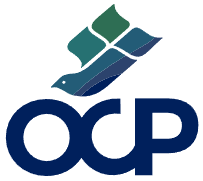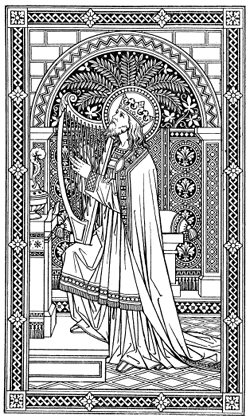
Sacrosanctum Concilium, the Constitution on the Sacred Liturgy, is one of the constitutions of the Second Vatican Council. It was approved by the assembled bishops by a vote of 2,147 to 4 and promulgated by Pope Paul VI on 4 December 1963. The main aim was to revise the traditional liturgical texts and rituals to reflect more fully fundamental principles, and be more pastorally effective in the changed conditions of the times, clarifying not only the role of ordained ministers but the modalities of appropriate participation of lay faithful in the Catholic Church's liturgy, especially that of the Roman Rite. The title is taken from the opening lines of the document and means "This Sacred Council".

Daniel Laurent Schutte is an American composer of Catholic and contemporary Christian liturgical music, best known for composing the hymn "Here I Am, Lord" and approximately 160 other hymns and Mass settings.
William A. Jurgens was an American Roman Catholic priest, composer, historian, musician, and translator of patristic and other works.

Church music is Christian music written for performance in church, or any musical setting of ecclesiastical liturgy, or music set to words expressing propositions of a sacred nature, such as a hymn.

The Dicastery for Divine Worship and the Discipline of the Sacraments is the dicastery of the Roman Curia that handles most affairs relating to liturgical practices of the Latin Church as distinct from the Eastern Catholic Churches and also some technical matters relating to the sacraments.

Oregon Catholic Press is a publisher of Catholic liturgical music based in Portland, Oregon. It published the newspapers Catholic Sentinel and El Centinela; both papers have been discontinued effective October 1, 2022.

The Roman Rite is the most common ritual family for performing the ecclesiastical services of the Latin Church, the largest of the sui iuris particular churches that comprise the Catholic Church. The Roman Rite governs rites such as the Roman Mass and the Liturgy of the Hours as well as the manner in which sacraments and blessings are performed.

Liturgical music originated as a part of religious ceremony, and includes a number of traditions, both ancient and modern. Liturgical music is well known as a part of Catholic Mass, the Anglican Holy Communion service and Evensong, the Lutheran Divine Service, the Orthodox liturgy, and other Christian services, including the Divine Office.
The Church of the Risen Christ is a Roman Catholic church in Singapore. It is located at Toa Payoh Central in the Toa Payoh Housing Estate and was founded in 1971.

Catholic liturgy means the whole complex of official liturgical worship, including all the rites, ceremonies, prayers, and sacraments of the Church, as opposed to private devotions. In this sense the arrangement of all these services in certain set forms is meant. Liturgy encompasses the entire service: prayer, reading and proclamation, singing, gestures, movement and vestments, liturgical colours, symbols and symbolic actions, the administration of sacraments and sacramentals.
Jan Michael Joncas is a Catholic priest of the Archdiocese of Saint Paul and Minneapolis, liturgical theologian, and composer of contemporary Catholic music best known for his hymn "On Eagle's Wings".
The St. Louis Jesuits are a group of Catholic composers who composed music for worship most often in a folk music style of church music in their compositions and recordings, mainly from their heyday in the 1970s through the mid-1980s. Made up of Jesuit scholastics at St. Louis University, the group initially used acoustic guitars and contemporary-style melodies and rhythms to set biblical and other religious texts to music sung in English in response to the liturgical reforms of the Second Vatican Council.

The Church Music Association of America (CMAA) is a nonprofit 501(c)(3) association of Catholic church musicians and others who have a special interest in music and liturgy, active in advancing Gregorian chant, Renaissance polyphony, and other forms of sacred music for liturgical use. Founded in 1964, it is affiliated with the Consociatio Internationalis Musicae Sacrae (Roma), an advisory organization on sacred music founded by Pope Paul VI.

Theodore Norbert Marier was a church musician, educator, arranger and scholar of Gregorian Chant. He founded St. Paul's Choir School in Cambridge, Massachusetts in 1963, and served as the second president of the Church Music Association of America.
Cesáreo Gabaráin was a Spanish priest and composer of liturgical songs such as Pescador de hombres. He received a Gold Record award in Spain, and his music is well known and sung by English and Spanish-speaking people. Gabaráin became a hymn-writer when he was thirty and went on to write about five hundred songs. He tried to write songs that were easy to learn and be sung by the entire congregation. His hymns support moments of personal and communal prayer and praise to God.
Clarence Rufus Joseph Rivers, usually credited as Clarence Joseph Rivers, was a Black Catholic priest and well-known composer of liturgical music. His work combined Catholic worship with black gospel, making him an integral part of the Black Catholic Movement. He also wrote several books on music and spirituality.

GIA Publications, Inc. is a major publisher of hymnals, other sacred music, and music education materials that is currently located in Chicago. The organization was initially the publishing arm of the Gregorian Institute of America (1941–1965); a school affiliated with the Roman Catholic Church that was initially established in Pittsburgh but operated for the majority of its history in Toledo, Ohio. The school specialized in training choral conductors in the methods of teaching choirs to sing Gregorian chant. After the school's closure following the Second Vatican Council, the publishing part of the school was sold to the Harris family.

Aniceto Nazareth was a Roman Catholic priest of the Archdiocese of Bombay, musician, published composer and liturgist.
Musicae Sacrae is a 1955 encyclical by Pope Pius XII dealing with Catholic liturgical music. It updated the 1903 motu proprioInter pastoralis officii sollicitudines, and was furtherly amended by the instruction Musicam sacram in 1967.











